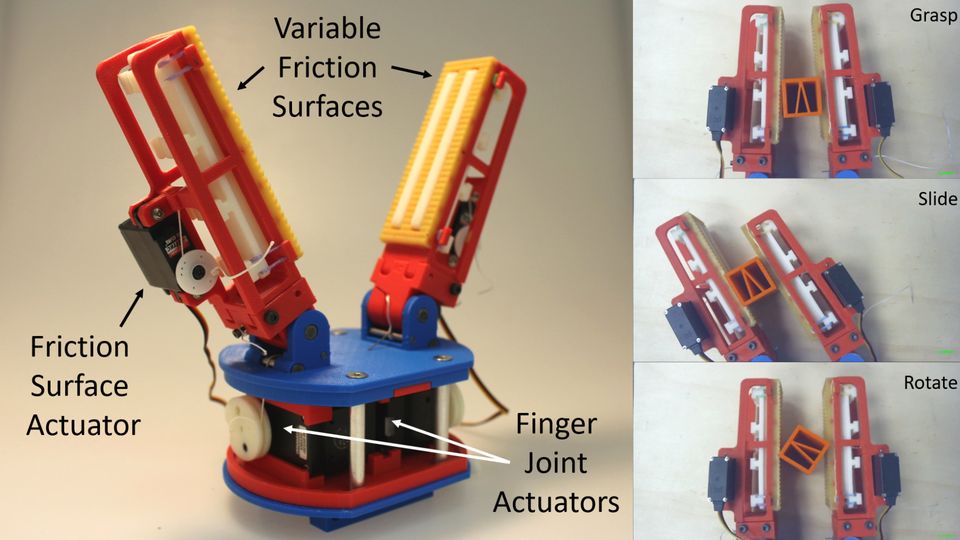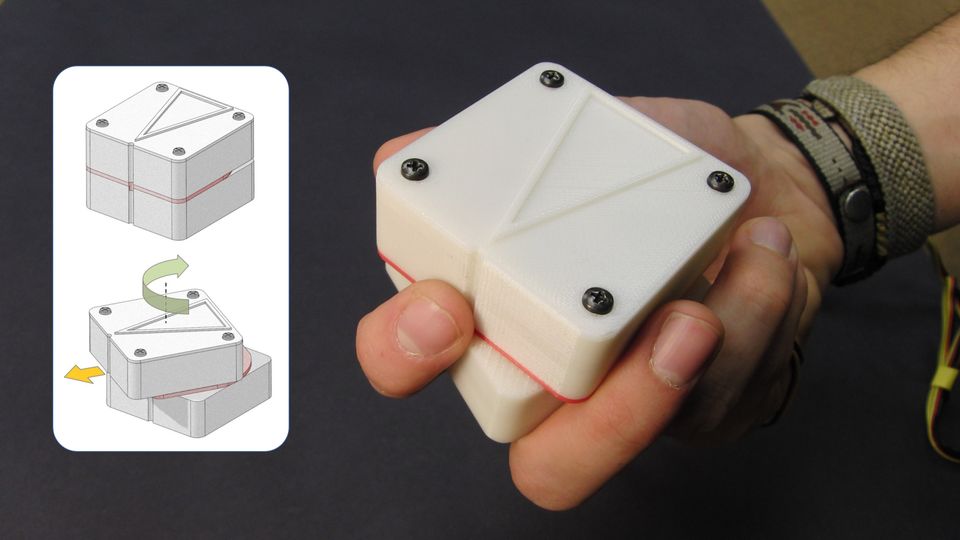Research
Research Overview
The Manipulation and Touch Lab was founded in late 2020 and has recently started publishing its work.
E-TRoll (Extended Tactile Rolling)
Barometric tactile sensors are smaller, cheaper, faster and more robust than other tactile sensing solutions, but suffer from low-resolution. By moving an object around over the sensor we can increase the data collected about an object, compared to a static grasp or pushing action. In this work we develop a new robot gripper designed for rolling grasped objects. One of the robot's fingers contains a strip of barometric sensors. We demonstrate that the resulting spatiotemporal data can be used for classification of different object geometries, via a simple machine learning approach. Visit the E-Troll Page.
Variable Friction Robotic Grippers
The Variable Friction robot finger concept was developed by Dr. Spiers while a member of the Grab Lab at Yale University. The variable friction concept enables robotic in-hand-manipulation with fewer actuators than normally required by such systems. Research on this topic is continuing at the Manipulation and Touch Lab. Visit the Variable Friction Manipulation page.
Tactile Sensing in Robotic In-Hand-Manipulation
We investigate the potential for In-Hand-Manipulation to enhance haptic sensing. By moving an object in the hand, we expose more of its surfaces to sensory parts of the fingers. Humans use this trick to help us understand objects by touch, so why shouldn't robots?
Read a Paper: D Mohtasham, G Narayanan, B Calli, AJ Spiers (2020), Haptic Object Parameter Estimation during Within-Hand-Manipulation with a Simple Robot Gripper, IEEE Haptics Symposium (HAPTICS), 2020
Shape-Changing Haptic Interfaces
The sense of touch is great at delivering information without relying on sight or sound, but the common haptics approach of using vibration feedback can lead to additional problems of distraction or numbness. We leverage the human ability to percieve shape by making shape-changing devices to communicate spatial information.
Read a Paper: Spiers AJ, Dollar AM, 2017, Design and evaluation of shape-changing haptic interfaces for pedestrian navigation assistance, IEEE Transactions on Haptics, Vol: 10, Pages: 17-28, ISSN: 1939-1412





